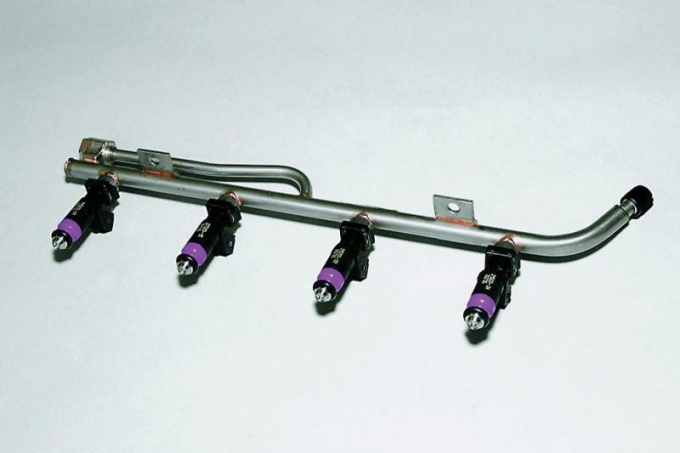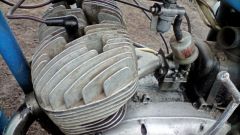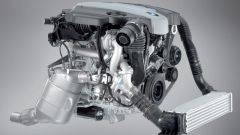The basis of the design of the fuel rail is a tube of circular or rectangular section, fixed on the intake manifold of the engine through bolted connections. The rail serves to supply pressurized fuel and its subsequent distribution between the injectors, the amount of which depends on the number of cylinders in the block. Nozzles can be fixed directly on the ramp, and to remain at a distance, while the fuel supply is carried out on individual tubes.
The fuel rail is an integral element of the injection system of almost all modern automotive engines. The first rail was applied on diesel engines, which was necessary to ensure the fuel injection pressure. In a previously common gasoline engines in the installation of a ramp was not necessary, since the fuel supply pressure is not required.
The pressure in the fuel rail is controlled with a pressure gauge attached with a special fitting, the hole for which is provided in its design. In the normal position the fitting is sealed with the tube protecting the thread from dust and dirt. Control the rail pressure is performed during inspection of the technical condition of the car.
To improve the dispersion of fuel in some engines, the design of the fuel rail provides the possibility of preheating. Also located on rail fittings for supply and drain of fuel.
The material for manufacturing the fuel rail is alloy steel that provides protection in contact with the fuel internal cavities from corrosion. After production ramp censored at the ability to withstand the pressure.
For inspection and fault detection of the fuel rail may require the removal of the engine. In this case, you detach the fuel supply, then disconnect the fuel feed hose. Then removed the drain hose that allows you to disassemble the rail from the housing by unscrewing with a wrench mounting bolts. Then with great care removed the injectors fitting which prudently covered with a protective caps. After inspection and repair of detected defects, the rail is mounted on the engine in the reverse order.
The fuel rail is an integral element of the injection system of almost all modern automotive engines. The first rail was applied on diesel engines, which was necessary to ensure the fuel injection pressure. In a previously common gasoline engines in the installation of a ramp was not necessary, since the fuel supply pressure is not required.
Design features
The pressure in the fuel rail is controlled with a pressure gauge attached with a special fitting, the hole for which is provided in its design. In the normal position the fitting is sealed with the tube protecting the thread from dust and dirt. Control the rail pressure is performed during inspection of the technical condition of the car.
To improve the dispersion of fuel in some engines, the design of the fuel rail provides the possibility of preheating. Also located on rail fittings for supply and drain of fuel.
Manufacturer
The material for manufacturing the fuel rail is alloy steel that provides protection in contact with the fuel internal cavities from corrosion. After production ramp censored at the ability to withstand the pressure.
Operation the fuel rail
For inspection and fault detection of the fuel rail may require the removal of the engine. In this case, you detach the fuel supply, then disconnect the fuel feed hose. Then removed the drain hose that allows you to disassemble the rail from the housing by unscrewing with a wrench mounting bolts. Then with great care removed the injectors fitting which prudently covered with a protective caps. After inspection and repair of detected defects, the rail is mounted on the engine in the reverse order.



